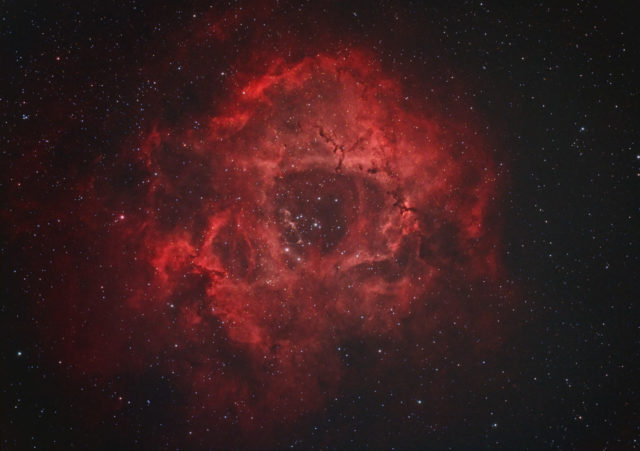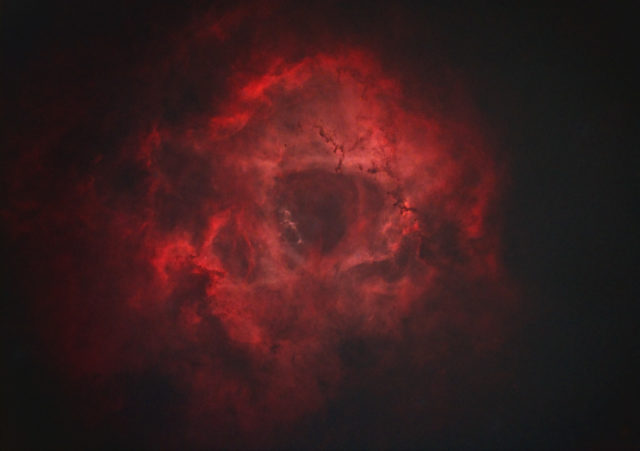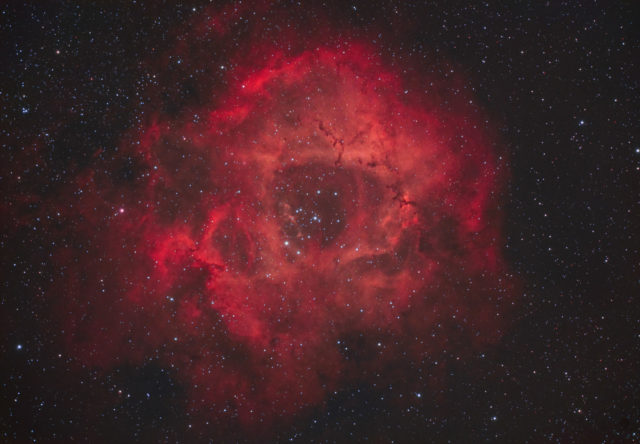
It was the first time using my new camera in heavy LP from the metro area where I have been staying. I went with the L-eNhance filter and picked the Rosette Nebula to test it. The Rosette was just crossing the meridian when I started imaging it. Also, I was troubleshooting the issues I have with flats, which this camera seems to be very sensitive about and worked on that during this session.
I also tried something new for me in processing the image. A relatively new (2017) sharpening procedure called Absolute Point of Focus (APF or APF-R) was done on the image. You can read about it and see two videos on how it is done at this link.
In this case, I had already ran the image through Starnet++ to cleanly remove all the stars. I then used the APF-R method to enhance the nebula only, blending in the stars afterwards. I must say the sharpening seemed superior to most other techniques I’ve used.

Anyway, the camera performed well with up to 3 minute exposures. An hour’s worth of data with the L-eNhance filter looked as good as anything I’ve done with the UV/IR filter from a darker site. There was too much LP to go with 5 minute subs, like I used to do with the QHY183c camera and that same filter, however.
As far as the flats, I used my laptop with a blank notepad screen up to illuminate the sensor while having a cheap white-light diffuser taped to the front of my scope. I used 2 second exposures and the resulting flat seemed to work for the most part. Good. I definitely need a way to create flats at night and this method is easy to do with what I already have.
Using all the other data taken that night and adding it together, I came up with the image below. It was the original 20 x 3 minutes, an additional 10 x 3 minutes, 21 x 2 minutes and 8 x 1 minute or a total of 140 minutes or roughly 2.3 hours.

